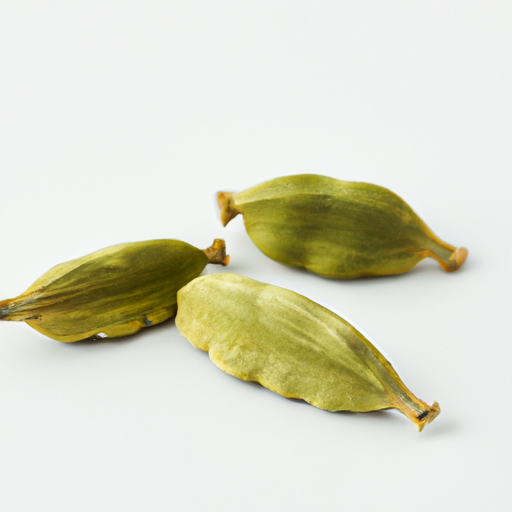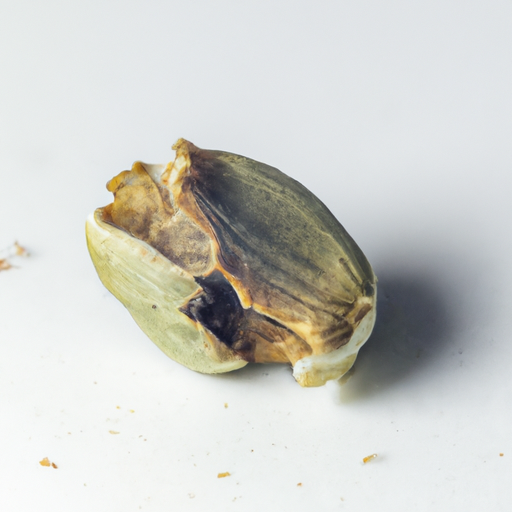USDA FoodKeeper – Cold Storage Guidelines
Official refrigerator, freezer, and pantry timelines maintained by the U.S. Department of Agriculture.
Visit USDA FoodKeeperWith its warm, aromatic flavor, cardamom can transform any dish from ordinary to extraordinary. Storing this spice in a cool, dry pantry can keep it fresh for up to a year, and even after its prime, it remains safe for a delightful 90 days. Embrace its versatility while keeping an eye on those dates!
Get our 16-page guide with exact timelines for 70+ foods. Save €1,500+/year by knowing what's actually safe to eat.
"According to USDA guidelines, ground cardamom should be stored in a cool, dark place away from heat sources and used within 6 months for best quality."


Pantry
Room temperature
Store in airtight container away from heat and light
365 days
Loss of aroma, flavor change, mold growth
Baking, beverages, curry powder, tea
Allspice
Hey there! So, let's talk about expiration dates versus best quality for cardamom. Expiration dates indicate when the cardamom may no longer be safe to consume due to potential spoilage or loss of potency. On the other hand, the best quality date suggests when the spice may start to lose its flavor and aroma but is still safe to eat. For example, if your cardamom has an expiration date of March 2023, it means it's safe to use until then. However, if the best quality date is listed as September 2022, the spice may start to lose some of its aromatic qualities after that date, but it's still okay to eat. Personally, I tend to follow the best quality date more than the expiration date with spices like cardamom. As long as it still smells fragrant and flavorful, I'd feel comfortable using it even past the best quality date. Just give it a sniff and a taste to make sure it's still good to go!
To determine if cardamom has gone bad, look for any signs of mold, discoloration, or an off smell, which could indicate spoilage. Fresh cardamom should have a vibrant green color, a strong, sweet aroma, and a slightly oily texture. If the cardamom appears dull, smells musty, or feels dry and brittle, it's best to discard it and replace it with a fresh batch.
Hey there! Let's chat about cardamom and food safety. While cardamom is a lovely spice with a unique flavor, it's essential to be mindful of foodborne illness risks when using it in your cooking. One common risk with cardamom is contamination. Make sure to buy it from a reputable source and store it in a cool, dry place to prevent any mold or bacteria growth. When using ground cardamom, note that it has a higher surface area, making it more susceptible to contamination than whole pods. If you experience symptoms like nausea, vomiting, or diarrhea after consuming cardamom-spiced dishes, it could be due to foodborne illness. Remember to trust your gut (literally!) and seek medical attention if needed. To keep things safe in your kitchen, always wash your hands before and after handling cardamom, and avoid cross-contamination by using separate utensils for raw and cooked foods. When in doubt, discard any leftover dishes containing cardamom that have been sitting out for too long to prevent any potential risks. Stay safe and enjoy your cardamom-spiced creations!
Hey there! Cardamom is a fantastic spice, but it can lose its potent flavor if not stored properly. Here are some practical storage hacks and pro tips to keep your cardamom fresh and flavorful: 1. **Air-tight containers**: Store your cardamom in airtight containers to prevent exposure to air, which can degrade its flavor. Mason jars or small spice jars work well for this. 2. **Cool, dark place**: Keep your cardamom in a cool, dark place away from sunlight and heat. A spice cabinet or pantry works great for this. 3. **Labeling**: Be sure to label your cardamom container with the date of purchase. This way, you can track its freshness and potency. 4. **Whole vs. Ground**: It's best to buy whole cardamom pods and grind them as needed to retain maximum flavor. Ground cardamom loses its potency more quickly. 5. **Freezing**: If you have a large quantity of cardamom, consider freezing it in a sealed bag to preserve its flavor for a longer period. I personally love using cardamom in my chai tea and baked goods, so I always make sure to store it properly to enhance its aromatic flavor. Give these tips a try, and you'll notice a difference in the quality of your cardamom!
Hey there, did you know that cardamom isn't just a spice, it's a whole vibe? Let me tell you why this little pod is a big deal! First off, cardamom has been cherished for centuries. Ancient Egyptians used it in perfumes, while the Greeks and Romans loved it in their cooking. It's like the OG multitasker! In many cultures, cardamom is a symbol of hospitality and is commonly used in welcoming guests with a warm cup of spiced tea or coffee. It's like a tasty hug in a mug! Here's a fun fact: did you know that cardamom is the third most expensive spice in the world, after saffron and vanilla? No wonder it's often referred to as the "Queen of Spices." Whether you're brewing a comforting chai latte, adding a hint of sweetness to baked goods, or even using it in savory dishes like curries, cardamom brings a unique and aromatic touch that can elevate any recipe. So next time you reach for this fragrant spice, remember its rich history and cultural significance – it's more than just a flavor, it's a story waiting to be shared!
Cardamom can be safely consumed even if stored at room temperature, as it has a low risk level. However, to maintain its optimal flavor and quality, it's recommended to store it in a cool, dark place away from heat and moisture.
Once opened, Cardamom can retain its quality for up to 365 days if stored properly in a sealed container in the pantry. To ensure its freshness, consider using it within 90 days after opening for the best flavor.
The type of container used to store Cardamom can impact its shelf life. Opt for airtight containers to prevent moisture and air exposure, which can degrade the quality of the spice. Glass jars or containers with tight-sealing lids are ideal for maintaining freshness.
It's best to avoid storing Cardamom next to strong-smelling spices like cumin or chili powder, as it may absorb their aromas. To prevent cross-contamination of flavors, store Cardamom in a separate airtight container away from pungent spices.
Cooking Cardamom does not significantly impact its expiration date. However, heat exposure during cooking can diminish some of its flavor and aroma. To enjoy the full benefits of Cardamom, consider adding it towards the end of the cooking process to preserve its essence.
Cardamom tends to have a longer shelf life in cooler temperatures, such as during winter months. High temperatures and humidity in summer can accelerate spice degradation. To prolong the shelf life of Cardamom, store it in a cool, dry place away from direct sunlight.
When transporting Cardamom for an extended period, ensure it is stored in a tightly sealed container to prevent exposure to air and moisture. Place the container in a cool, dark place, away from direct sunlight and heat sources. Avoid storing it near items with strong odors to maintain its original flavor.
Stop guessing about expiration dates. Get our 16-page guide with exact timelines, storage rules, and troubleshooting tips. Save €1,500+/year.
See Canidigest Digestibility Insights
Dig deeper into how Cardamom behaves in your digestive system.
Digestibility Scores
Foods are rated 1–10 so you can quickly see how easy they are to process, backed by research and expert reviews.
Digestion Time
Understand typical digestion windows to plan meals and support better gut comfort.
Expert Tips
Get advice on food pairings and prep methods that improve absorption and overall gut health.
Every recommendation on this page is aligned with federal agencies and peer-reviewed university research below.
Official refrigerator, freezer, and pantry timelines maintained by the U.S. Department of Agriculture.
Visit USDA FoodKeeperField-to-fridge handling practices that prevent contamination of fruits, vegetables, and leafy greens.
Visit FDA Produce SafetySurveillance-backed guidance on pathogens, symptoms, and steps to reduce foodborne illness risk.
Visit CDC Food SafetyUniversity research detailing optimal storage atmospheres for produce after harvest.
Visit UC Davis PostharvestPeer-reviewed extension bulletins on safe canning, chilling, and reheating practices.
Visit Penn State ExtensionNeed deeper reading? Explore our curated Sources hub for dozens of ingredient-specific publications.
Scan your food directly and get instant safety info using our AI-powered camera feature.
Cooking Ingredients
View expiration date and storage guide →
Beverages
View expiration date and storage guide →
Grains & Pasta
View expiration date and storage guide →
Instant Foods
View expiration date and storage guide →
Fruits & Vegetables
View expiration date and storage guide →
Baking Supplies
View expiration date and storage guide →
Canned & Jarred Goods
View expiration date and storage guide →
Grains & Pasta
View expiration date and storage guide →
Grains & Pasta
View expiration date and storage guide →
Important: These are general guidelines based on authoritative sources listed above. Always use your best judgment and when in doubt, throw it out. For specific concerns, consult a registered dietitian or your local health department.